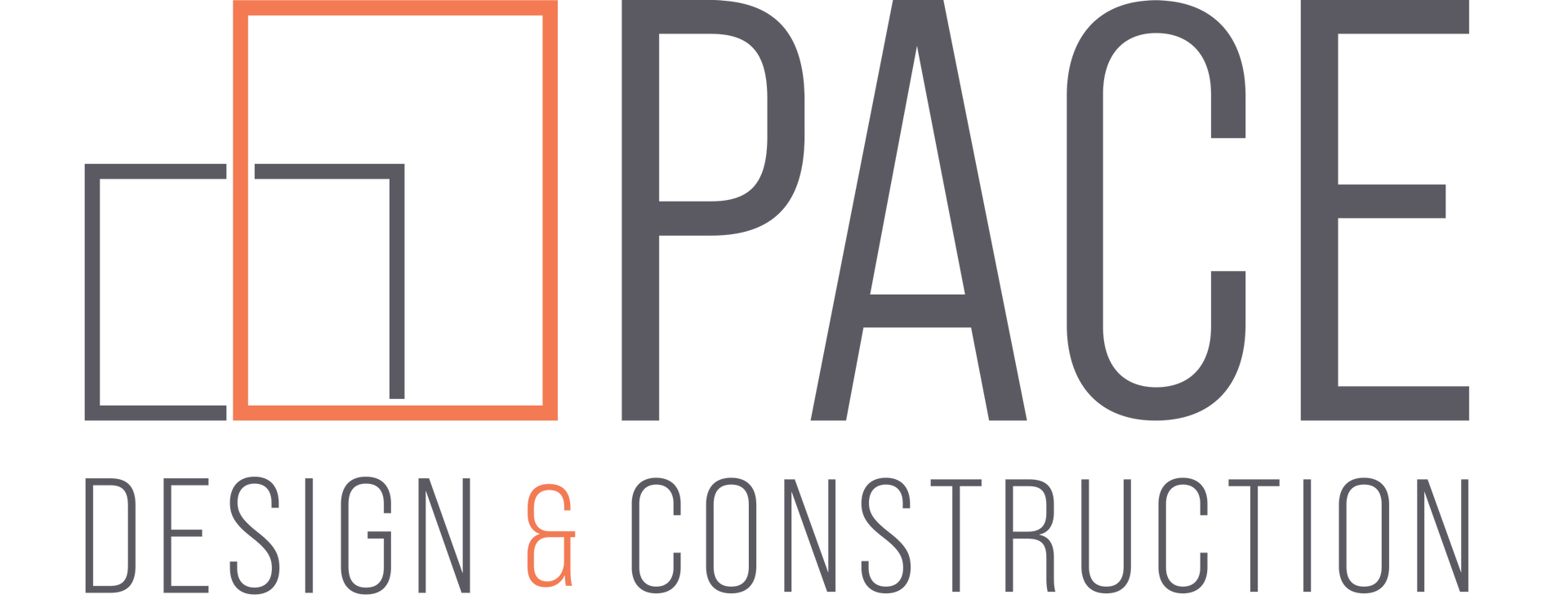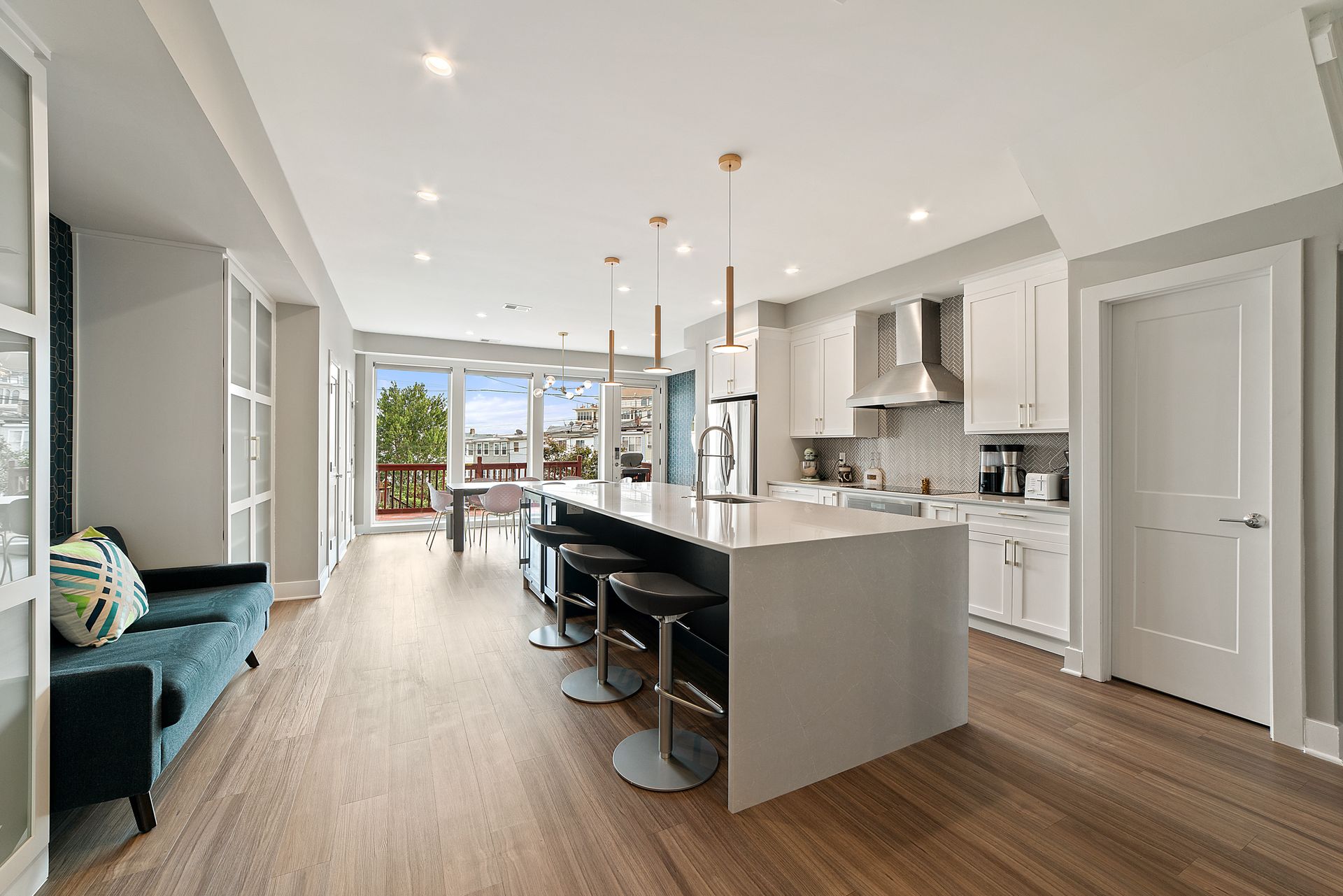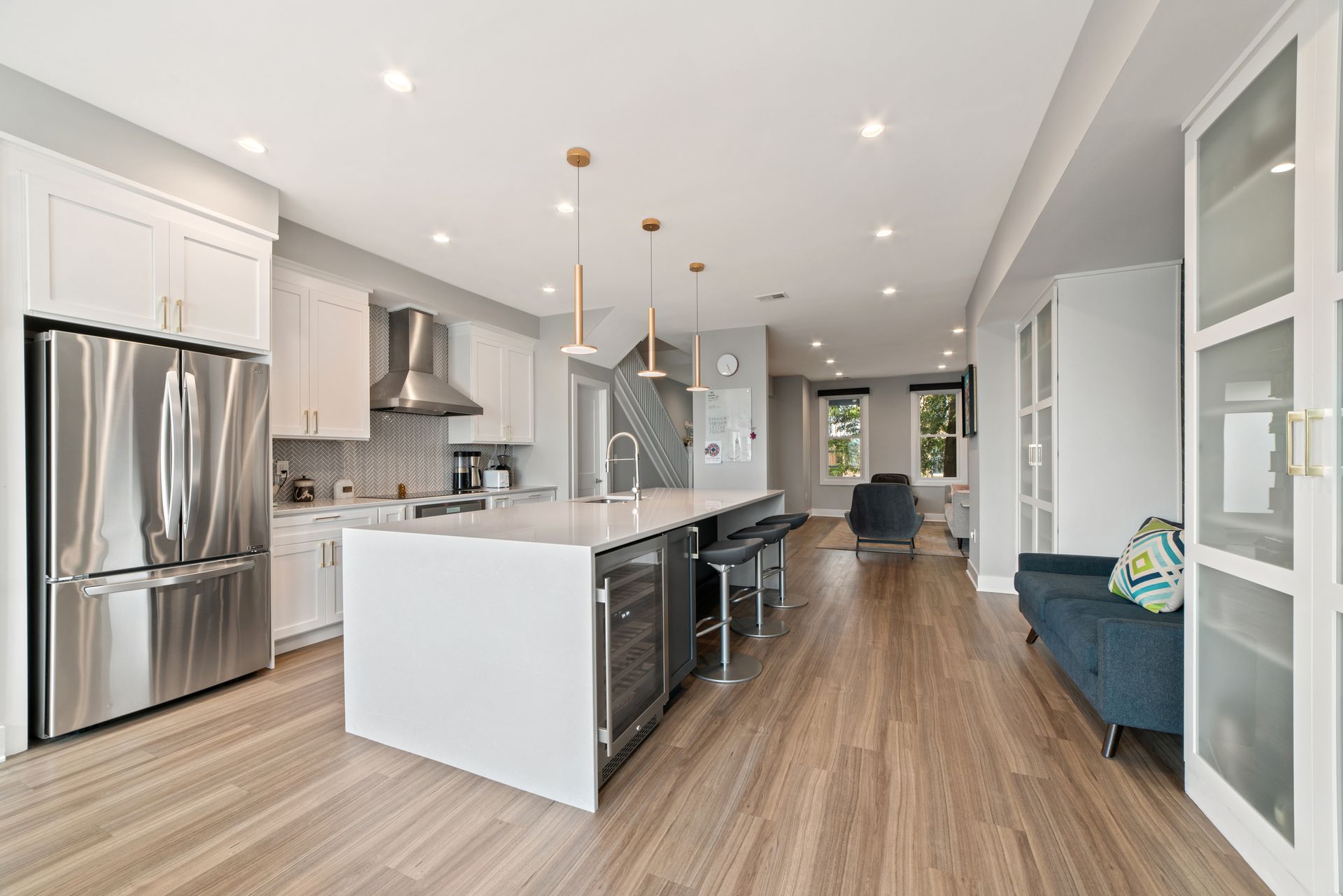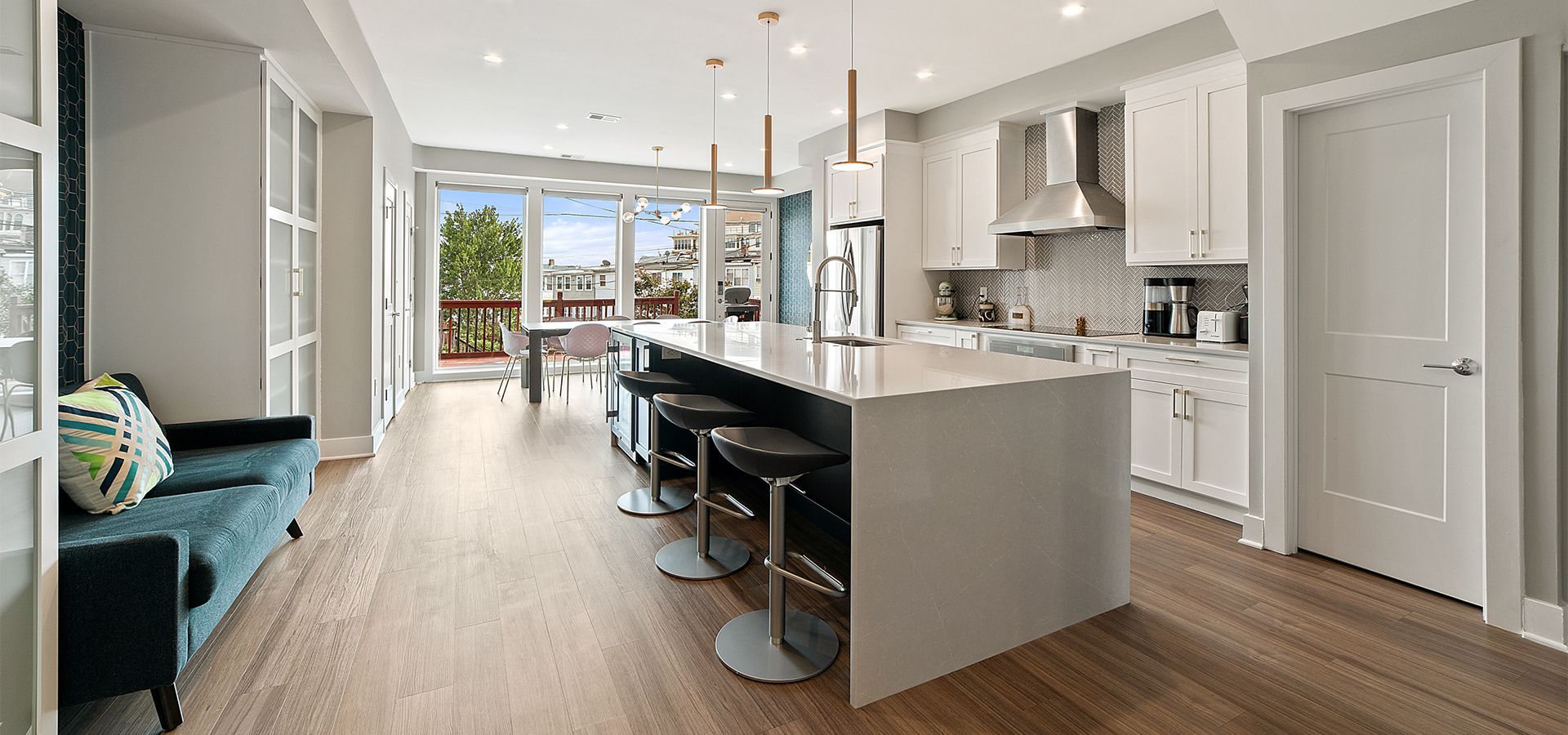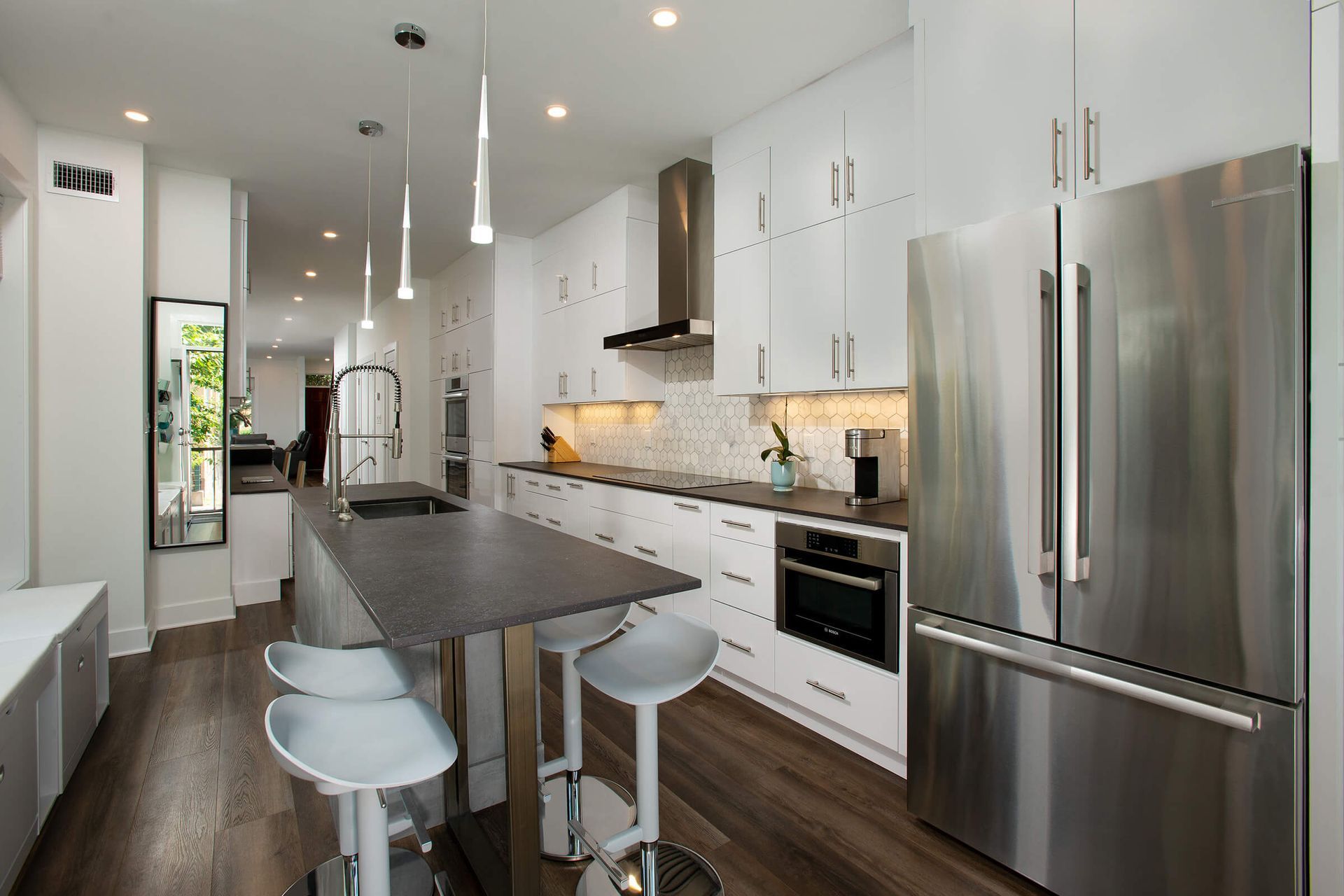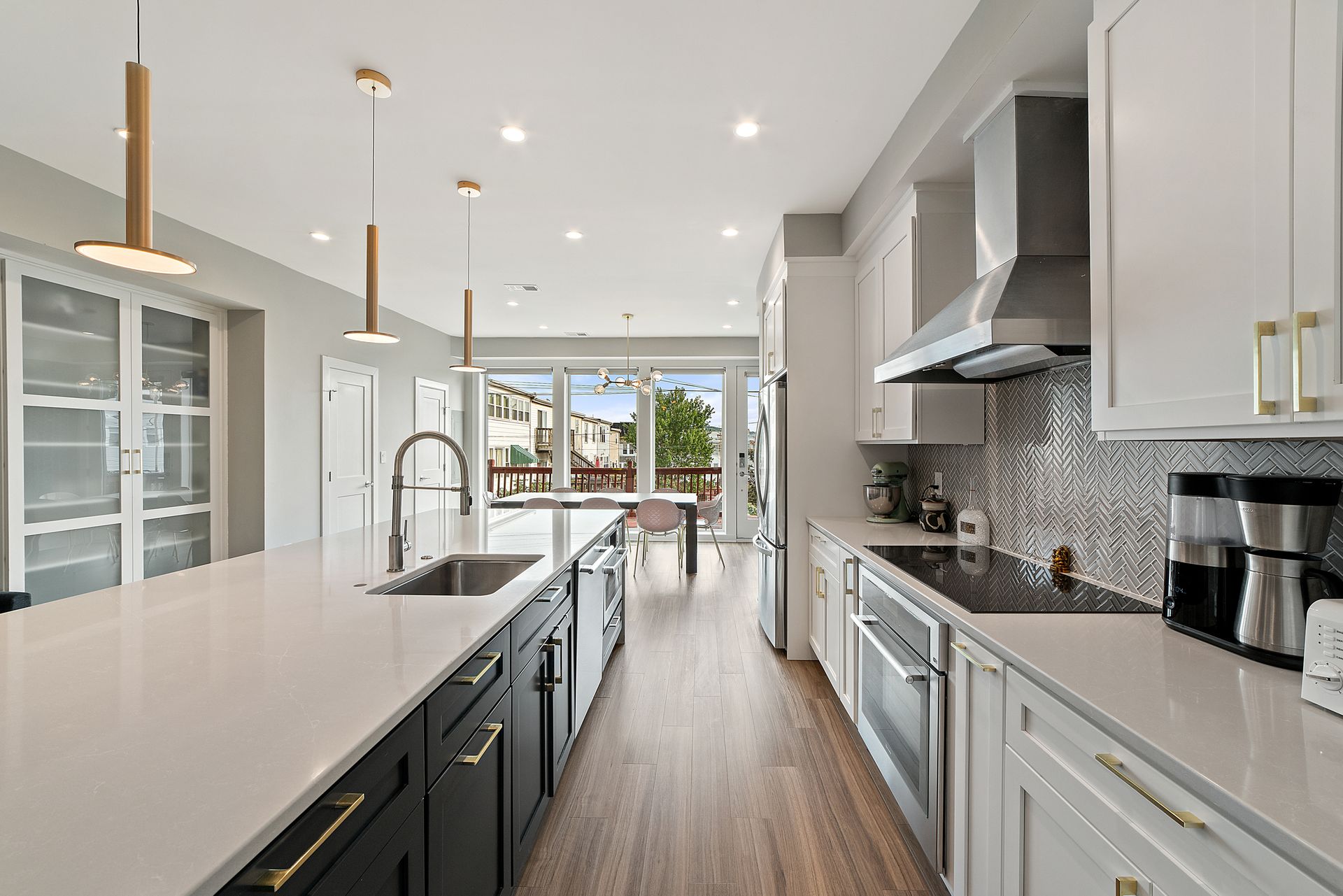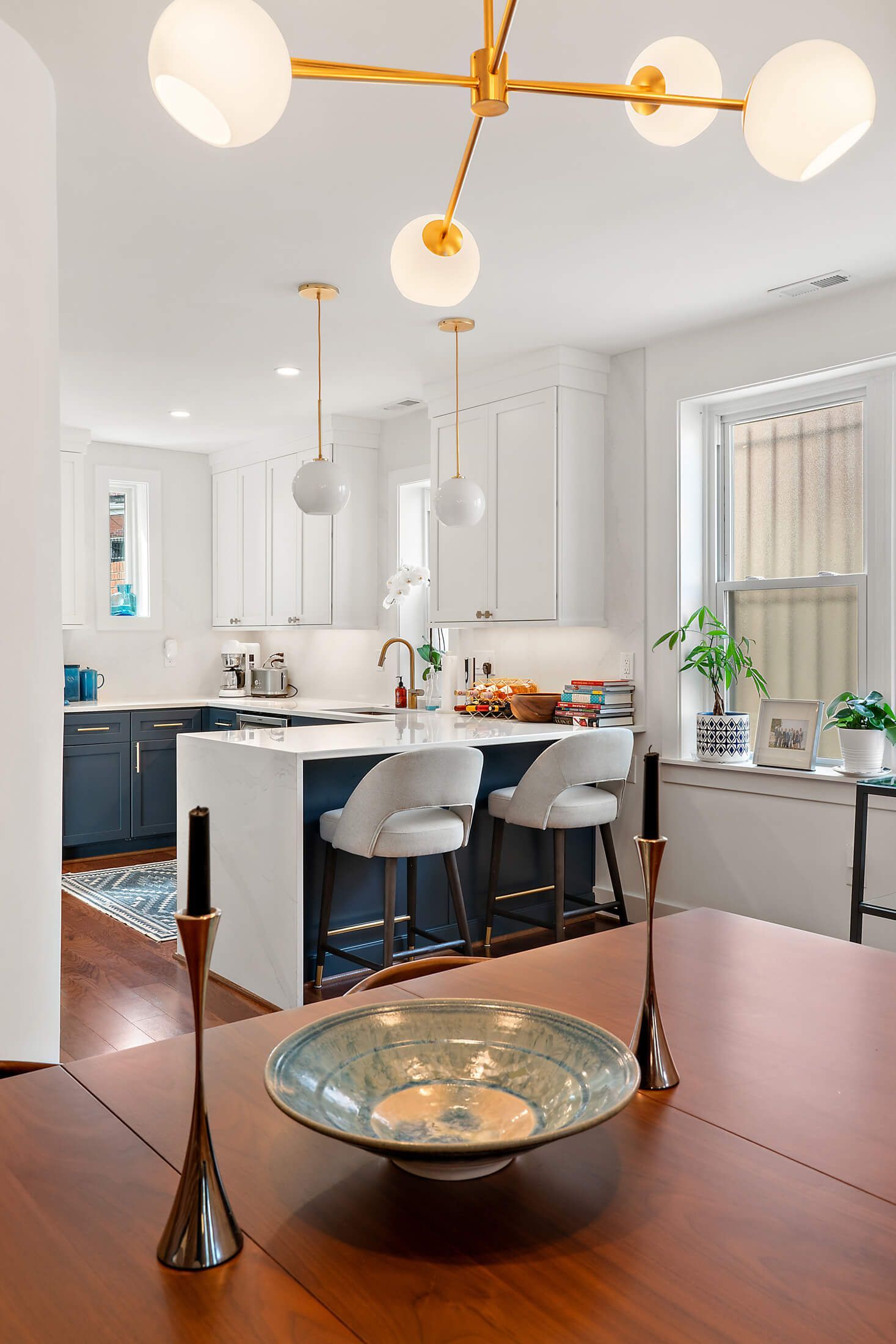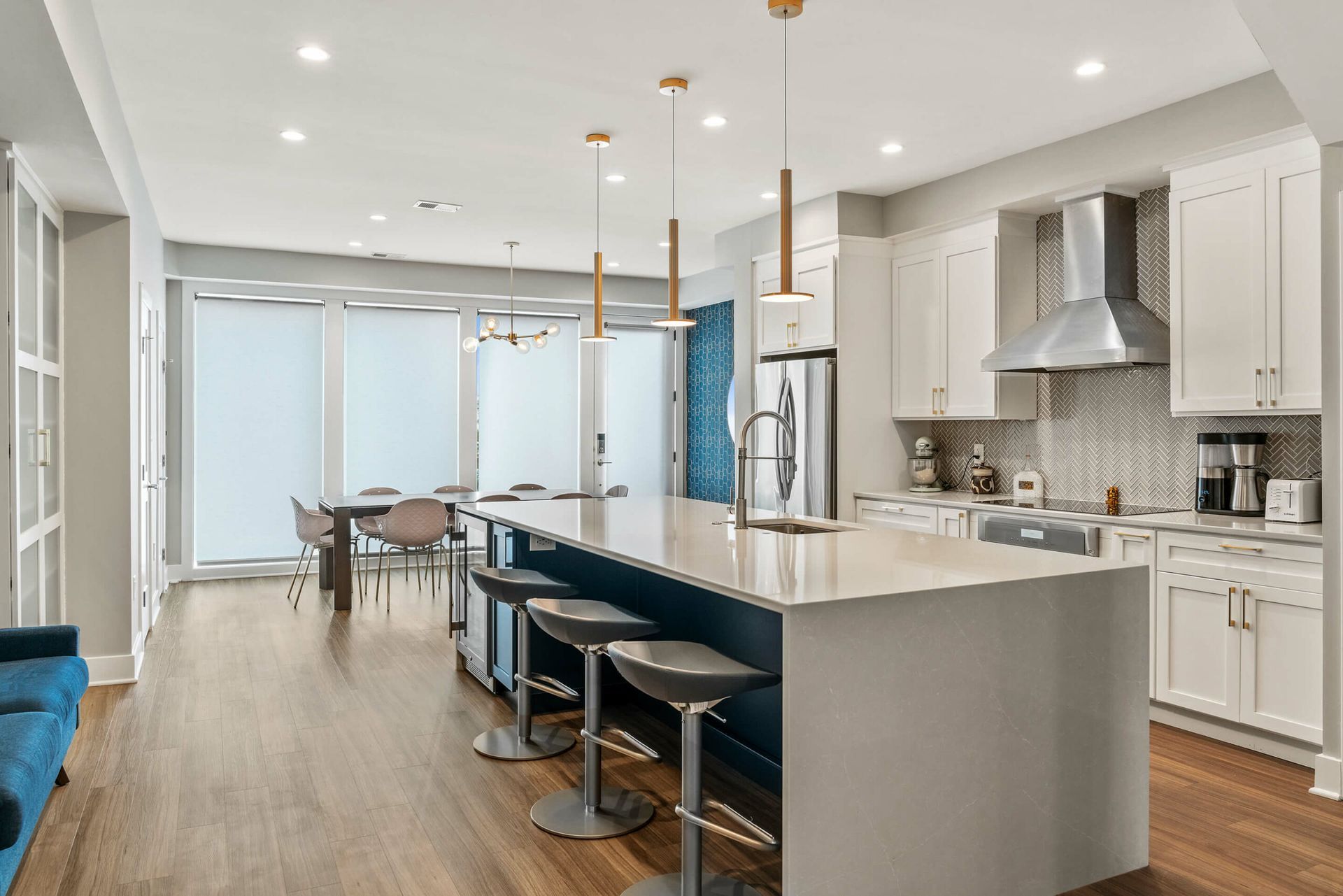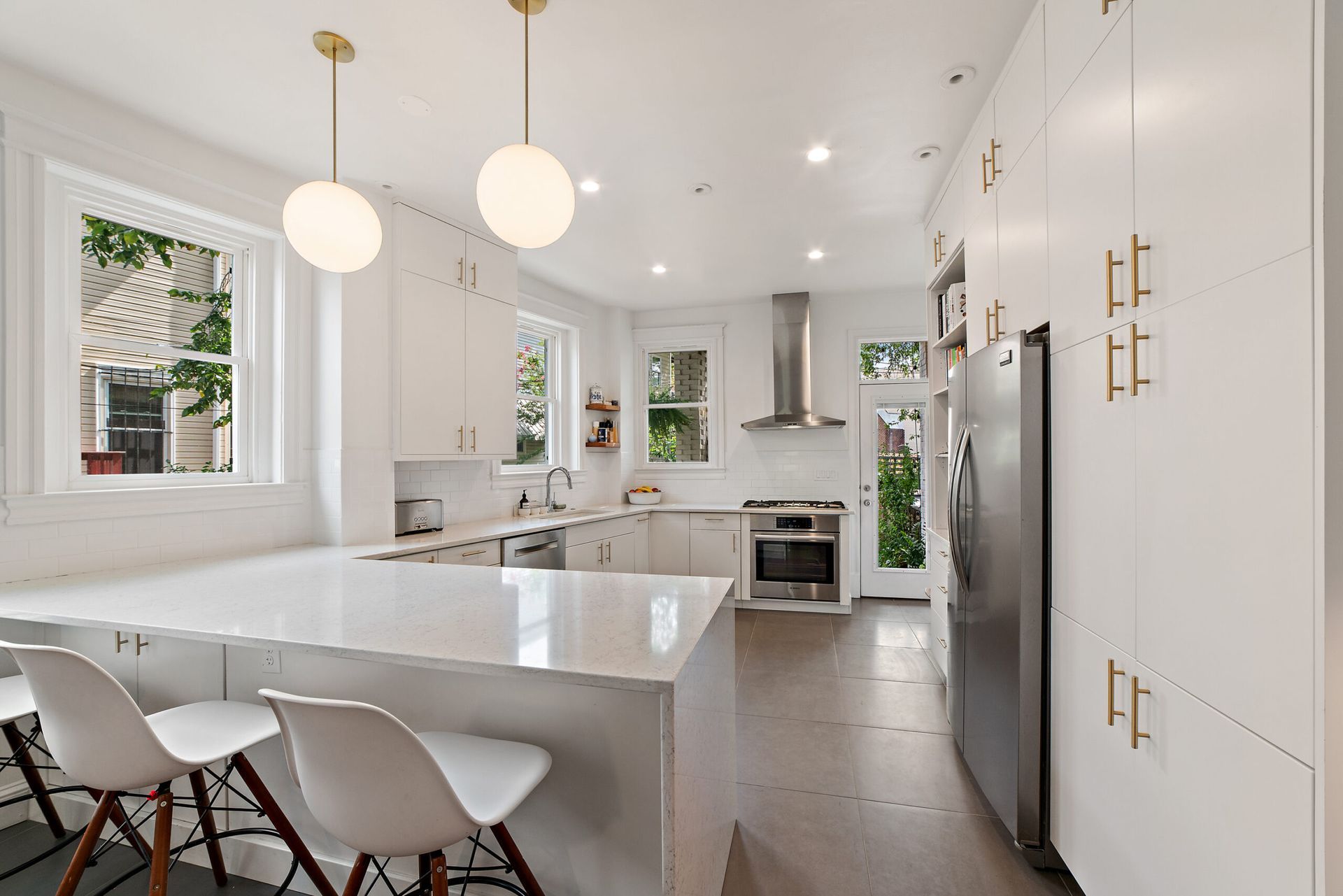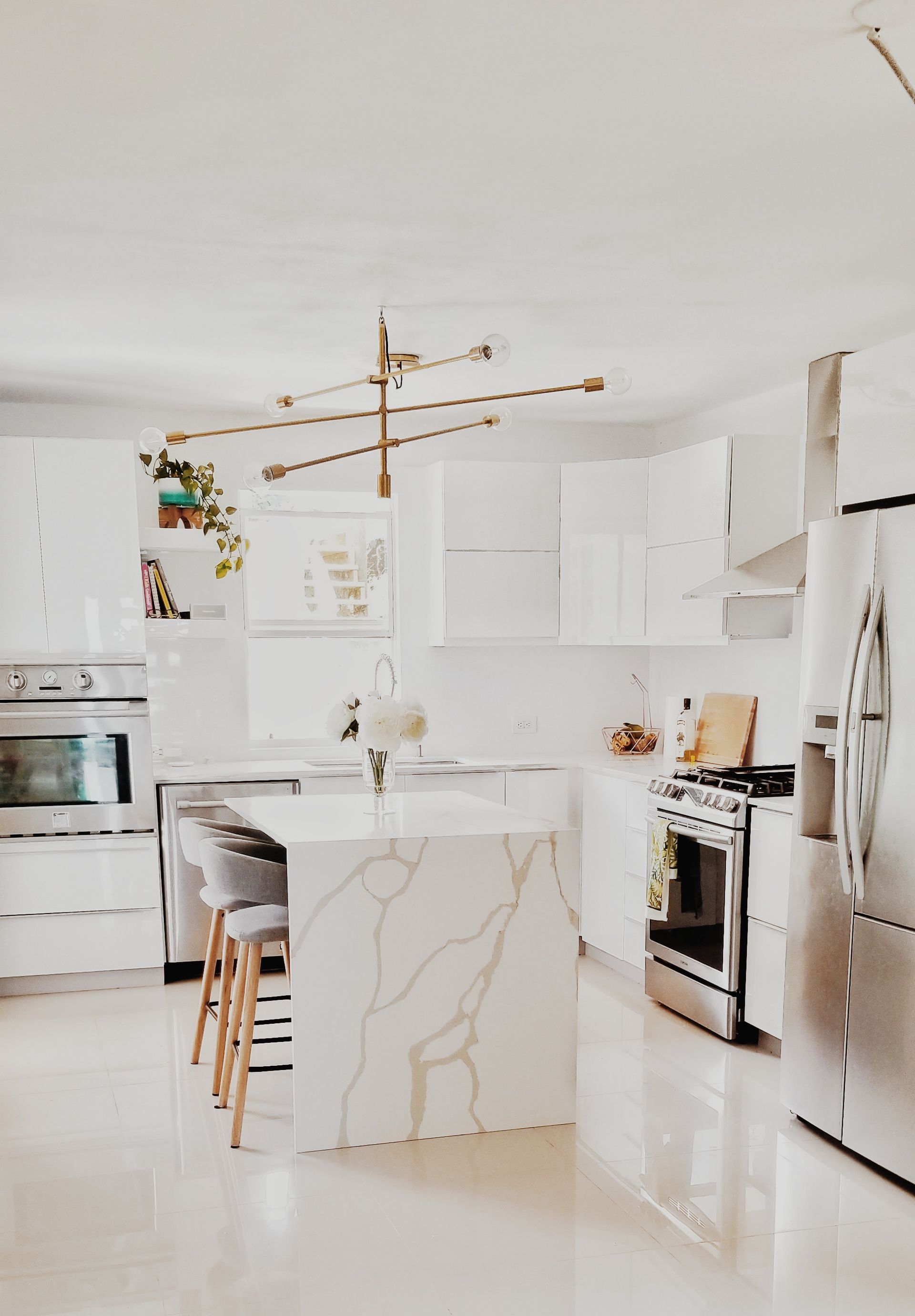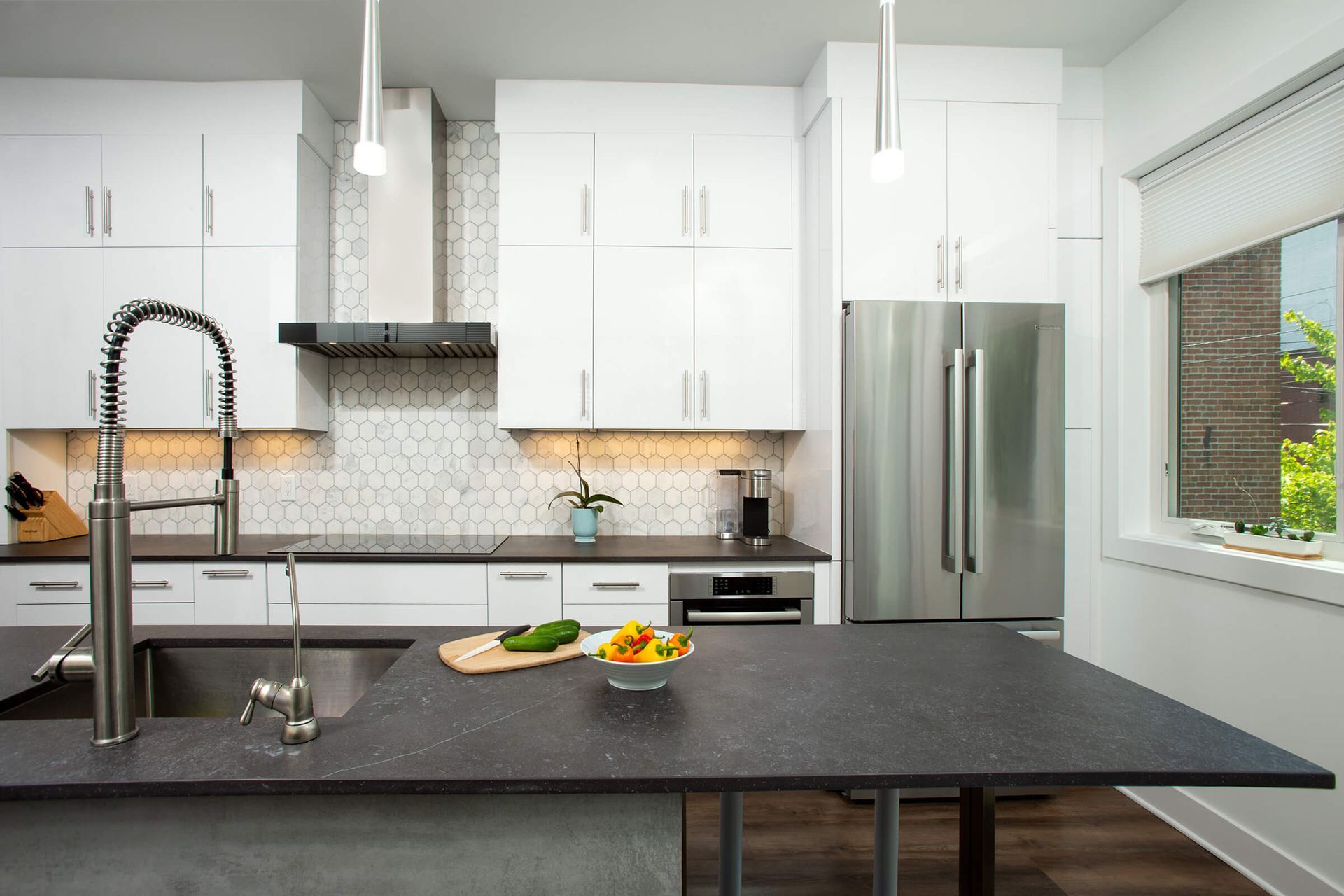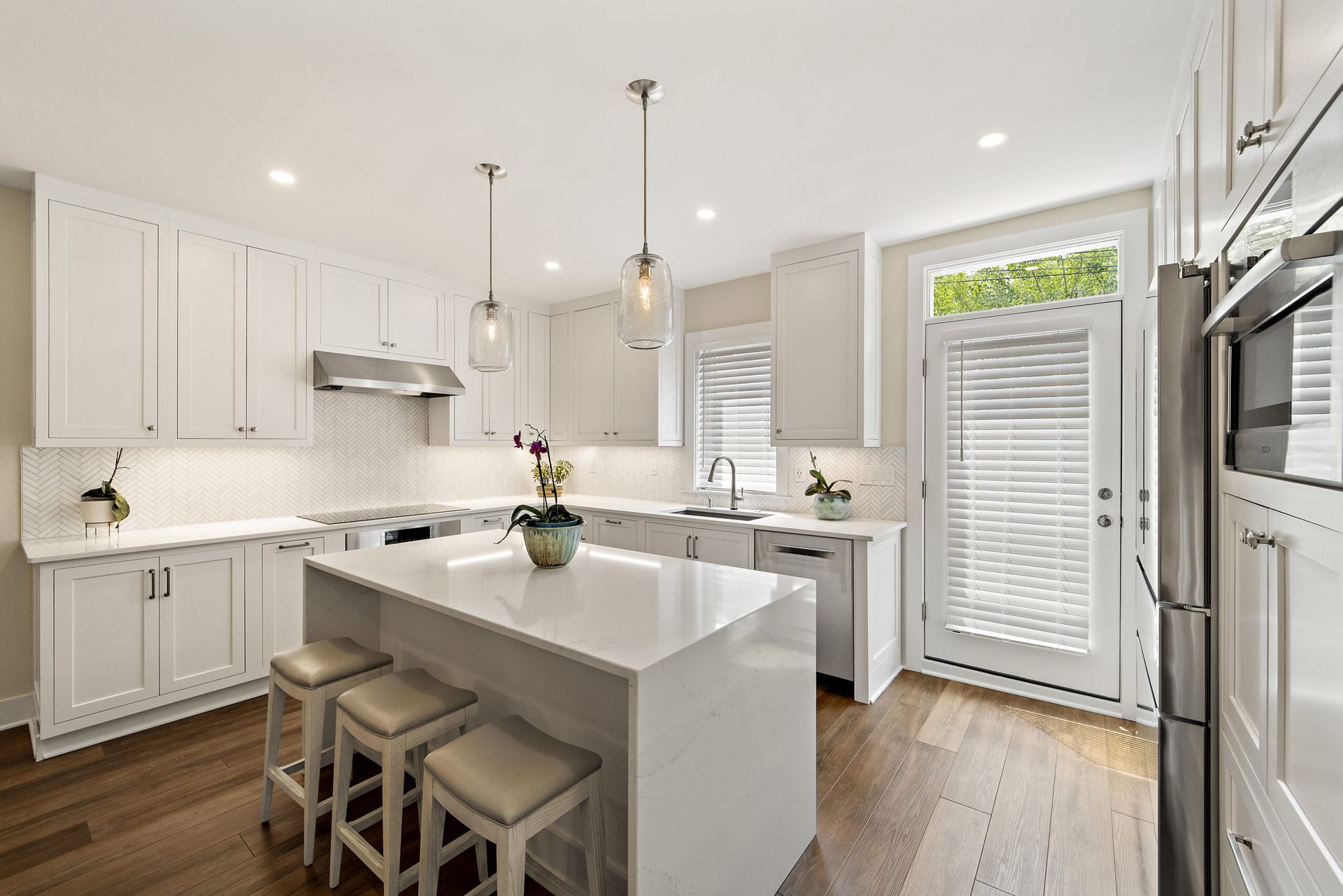Understanding the Cost of a Kitchen Remodel
IN Washington, DC
Kitchen remodeling is more than just a home improvement project; it's an opportunity to breathe new life into the heart of your Washington DC home. Whether you're dreaming of a sleek modern kitchen or prefer a cozy inviting space, a well-planned remodel can transform your kitchen into a room that reflects your style, complements your home's aesthetic, and meets your entertaining and cooking needs. But while you're dreaming of the possibilities, a common question keeps popping up:
How much does it cost to remodel a kitchen in Washington DC?
Welcome to PACE Design & Construction's comprehensive guide on the cost of a kitchen remodel in Washington DC. As experts in the kitchen remodeling and home renovation space, we understand that planning for a kitchen remodel can be an exciting yet daunting task. One of the key elements that homeowners often struggle with is understanding and budgeting for the costs involved.
This guide aims to break down those prices, providing you with a clear and detailed understanding of what you can expect to spend on a kitchen remodel in the greater Washington DC area. We'll cover everything from minor kitchen remodels to major upscale transformations, offering insights into how specific changes and upgrades can impact your budget. Ultimately, we'll help you answer that nagging question—how much does it cost to remodel a kitchen in Washington DC?
Whether you're just starting to dream up ideas or ready to dive into your kitchen remodel today, our guide will give you the confidence and clarity you need to move forward. We look forward to helping you create the kitchen of your dreams!
Whether you're just starting to dream up ideas or ready to dive into your kitchen remodel today, our guide will give you the confidence and clarity you need to move forward. We look forward to helping you create the kitchen of your dreams!
Table Of Contents:
- Understanding Factors That Influence Your Kitchen Remodel Costs
- The Role of Kitchen Size and Layout in Remodeling Prices
- Material Choices and Their Impact on Cost
- Appliances and Fixtures: An Essential Component of Your Kitchen Remodel Budget
- Custom Features and Design Requests in Kitchen Remodels
- Labor and Professional Services: Key Factors in Kitchen Remodeling Costs
- How Much Does a Kitchen Remodel Cost in Washington DC?
- The Importance of Detailed Financial Planning for Your Kitchen Remodel
- The Unique Challenges of Urban Kitchen Renovations
- Navigating Building Codes & Regulations
- Neighborhood Impact
- FAQs—How Much Does it Cost to Remodel a Kitchen in Washington DC
- Conclusion
Understanding Factors That Influence Your Kitchen Remodel Costs
Remodeling a kitchen is no small task, especially in the bustling Washington DC area. With so many variables to consider, understanding how each one influences your total project cost can feel like navigating a maze. But don't fret. Let's delve into some of these factors and unravel their impact on your dream renovation.
Complexity of Kitchen Layout and Remodeling Expenses
The layout of your kitchen can also have a significant impact on the cost of a remodel. More complicated layouts may require additional work and therefore lead to increased expenses.
For example, if you decide to change the existing layout of your kitchen—maybe you want to move your sink to an island or relocate your range—you'll likely need to reroute plumbing and electrical wiring. Such changes can be labor intensive and may require hiring specialized professionals.
Even without major layout changes, complex kitchen designs can still be pricier. Kitchens with lots of corners or unusual angles may need custom-built cabinets or specially cut countertops. These customizations can quickly drive up the cost of materials and labor.
Material Choices and Their Impact on Cost
Another critical factor that significantly affects the cost of a kitchen remodel is the selection of materials. The type, quality, and quantity of materials used in your kitchen remodel can dramatically affect the overall cost.
Influence of Material Choices on Overall Cost
The materials you choose for your kitchen remodel—from countertops and cabinetry to flooring and fixtures—will play a substantial role in determining the project's total expense. Every material comes with its own price point, durability, and maintenance requirements, and these factors should be considered alongside your budget and aesthetic preferences.
For instance, choosing a granite countertop, known for its durability and timeless appeal, might be more expensive upfront than opting for a laminate countertop. However, the latter may not last as long, potentially leading to higher costs in the long run.
High-End vs. Budget-Friendly Materials
There's a wide range of materials available for every component of your kitchen, from high-end to budget-friendly options. High-end materials, like quartz countertops, hardwood flooring, or custom-made cabinets, offer superior durability and a luxurious look, but they come with a higher price tag.
On the other hand, more affordable materials can help keep prices down, but they might not offer the same lifespan or aesthetic appeal as their pricier counterparts.
Kitchen Cabinet choices and budget impact
The cabinetry you select for your new kitchen can account for 30%, 40%, or even 50% of your total kitchen renovation costs. This is because the price of kitchen cabinets varies widely based on factors like quality, material, and whether they are custom-built, semi-custom, or stock models.
As you set out to create your dream kitchen, take some time to fully understand the potential investment in cabinets. Plan wisely to strike a balance between style, functionality, and affordability. These helpful resources can provide some guidance.
Appliances and Fixtures: An Essential Component of Your Kitchen Remodel Budget
Your dream kitchen probably features sleek high-end appliances with all the bells and whistles. But while you're picturing your ideal space, it's important to keep in mind that these elements can significantly contribute to your overall renovation prices.
Appliances
The cost of kitchen appliances varies widely depending on their quality level. For instance, budget-friendly options may start around $1000 but if you're aiming for an upscale kitchen remodel with luxury brands like Sub-Zero or Wolf, prepare yourself as this could easily exceed $20k.
If you decide to go down the route of investing in high-end appliances then don't forget about installation costs too. These are often overlooked but can add up quickly especially when installing larger items, like built-in refrigerators or professional-grade ranges, which require more complicated setup procedures.
Fixtures
Faucets, lighting, hardware, and other fixtures may seem like small details compared to a gleaming range or a sleek new vent hood. But these fixtures are a fundamental part of your space, and their prices can vary dramatically. The average cost of fixtures depends a great deal on the type, style, and quality of the fixtures you choose.
A simple stainless-steel sink set might run a couple of hundred dollars, whereas a similar designer version, made from copper or brushed nickel, could be priced in the thousands. Installation costs can add up here, too so if you're considering more complex features like a pot filler or a garbage disposal system, be sure to account for the added labor in your remodeling budget.
Labor and Professional Services: Key Factors in Kitchen Remodeling Costs
Last but certainly not least, make room in your remodeling budget for labor and professional services. The expertise of professionals can ensure remodeling project is carried out efficiently and to a high standard. However, these services come at a cost.
Role of Professional Contractors in the Remodeling Process
General contractors and design build firms like PACE Design & Construction bring their expertise and experience to your kitchen remodeling project, which can be invaluable. They can guide you through the entire process, from initial design and planning to execution and final touches. Contractors can help ensure that the project stays on schedule and that the work is done correctly, adhering to all relevant building codes and regulations.
In addition, contractors often have established relationships with suppliers and can potentially get materials at lower prices. They also have a team of skilled tradespeople, like plumbers, electricians, and carpenters, who can handle various aspects of the remodel. This can save you the time and stress of coordinating different workers yourself.
Impact of Labor Costs on the Overall Budget
Labor costs can make up a substantial portion of your kitchen remodel budget. The exact percentage can vary widely based on the complexity of your project and the rates of the professionals you hire. In general, labor accounts for 30-50% of the total budget.
It's also important to note that labor costs can increase if unexpected issues arise during the remodel; discovering water damage or outdated wiring, for example. These complications can require additional work and materials, leading to increased costs.
Key Takeaway:
The size, layout, materials, appliances, fixtures, custom features, and labor all contribute to the overall cost of a kitchen remodel. Considering these factors and making informed choices is crucial for staying within budget and achieving the desired outcome.
How Much Does a Kitchen Remodel Cost in Washington DC?
If you're like most homeowners considering a kitchen renovation project, your first question is likely, "How much does it cost to remodel a kitchen in Washington DC?" And the answer is—there is no specific figure. The average price range for a kitchen remodel in the greater Washington DC area can vary widely depending on several factors.
Average Kitchen Remodel Costs
The cost of kitchen remodeling can vary greatly depending on the scale and specifics of the project. In Washington DC, these costs tend to be higher than the national average due to the area's urban landscape, high cost of living, and real estate prices.
A minor mid-range kitchen remodel in Washington DC, which typically involves updates to a functional but dated kitchen, averages between $30,000 and $50,000 Remodeling Magazine's 2023 Cost vs Value Report.
For a major mid-range kitchen remodel, which generally includes more extensive changes like replacing kitchen cabinets, installing new countertops, and upgrading appliances, the cost ranges from $65,000 to $85,000.
An upscale major kitchen remodel in Washington DC, involving premium upgrades and potentially altering the layout or expanding the kitchen's size, will cost $150,000 or more, depending on the nature of the project and frequently major kitchen renovations that include a powder room and other minor renovations are $250,000 - $350,000.
The Importance of Detailed financial Planning for Your Kitchen Remodel
When it comes to remodeling your kitchen in the Washington DC area, having a detailed financial plan is crucial. This not only gives you an idea of how much money you'll need to set aside but also helps ensure that the project doesn't stall due to unforeseen costs.
Why You Need a Detailed financial Plan
A detailed financial plan outlines all potential expenses involved in your kitchen remodel - from materials and labor costs, permits, design fees, and even unexpected contingencies. It provides transparency about where every dollar goes while helping you manage spending effectively throughout the renovation process. Without this comprehensive financial roadmap, it's easy for costs to spiral out of control or for important aspects of your remodel to be overlooked.
Getting Multiple Quotes From Contractors
In addition to creating a thorough financial plan, getting multiple quotes from contractors can help ensure that you're getting the best value for your investment. Each contractor will have different overheads and profit margins which could significantly affect their quote. By engaging several reputable contractors like PACE Design & Construction, homeowners can compare prices and services offered before making an informed decision.
Bear in mind that cost should not be the sole deciding factor when choosing a contractor; quality workmanship and professional service are equally important considerations as well.
Pace Design & Construction has unique expertise navigating urban renovations within townhomes and condominium buildings across the Washington DC metro area—factors often accompanied by unique challenges like limited space or stringent building regulations.
- Hiring professionals: A team like Pace Design & Construction, who are familiar with these challenges and the local building codes, can help ensure that your project runs smoothly.
- Historic renovations: If you're remodeling a historic home in Washington DC, special considerations need to be taken into account. PACE is skilled at such renovations ensuring compliance with preservation guidelines while delivering stunning results.
Key Takeaway:
Planning your dream kitchen remodel? Don't forget the budget. Detailed planning helps keep costs in check and prepares you for any unexpected expenses. Get multiple quotes from contractors to find competitive prices but remember, cheaper isn’t always better quality. Factor in everything from labor to materials—every element influences your final cost.
The Unique Challenges of Urban Kitchen Renovations
Remodeling a kitchen in an urban or in-town setting, like the bustling Washington DC area, can be both exciting and challenging. The allure is often the charm and character that come with these spaces. But it also means facing unique obstacles not found in suburban renovations.
For instance, you may find yourself dealing with space constraints, strict building codes, or even historical preservation guidelines. All these factors can potentially add to your kitchen remodel cost.
When planning a kitchen remodel in Washington DC, it's crucial to understand and adhere to the local building codes and regulations. This is especially true for urban renovations in townhomes, condominium buildings, and historic homes where specific rules often apply.
These laws are designed to ensure safety standards during construction or renovation projects. They cover various aspects of the project including plumbing, electrical systems, structural integrity, etc., which all play significant roles in a home improvement project.
Your contractor should be well-versed with these requirements but you also need some familiarity so that you can effectively participate in decision-making processes regarding your remodel design and implementation strategies.
Townhome & Condominium Considerations
In addition to standard building codes, townhouses, and condos usually have their own set of rules laid out by Homeowners Associations (HOA's). Before starting any major work like a kitchen remodel within these settings, approval from the HOA may be necessary—they might have stipulations about noise levels or disposal of debris among other things. Ensure your chosen contractor has experience dealing with this process.
Honoring Historic Homes’ Integrity
If you're renovating an older home designated as historic under DC’s preservation law; additional guidelines will apply aimed at preserving the architectural character of such structures while allowing modern functionality enhancements. The Historic Preservation Review Board (HPRB), for instance, might need to approve your renovation plans. It's important that you choose a contractor like PACE Design & Construction. Our professional designers and builders have experience in historic renovations and understand the unique challenges these projects present.
Neighborhood Impact
Renovating a residential property in urban areas can lead to various neighborhood impacts including noise pollution, dust generation, traffic congestion, parking issues, waste disposal concerns, and aesthetic alterations. Such changes can potentially instigate complaints or disputes with neighbors or community associations. Therefore, it is crucial for homeowners and contractors to maintain open lines of communication with the local community about the renovation project, ensuring they are informed and any negative impacts or conflicts are promptly addressed and mitigated.
Embarking on a kitchen remodel in your Washington DC home is an exciting endeavor. However, it's essential to remember that such projects can have significant impacts on the surrounding neighborhood. At PACE Design & Construction, we understand these challenges and are committed to minimizing any negative effects.
Noise Management
The noise from construction work can be disruptive for neighbors. Be sure to partner with a firm that uses modern equipment designed to reduce noise levels during operations. Likewise, any professional you employ should adhere strictly to local construction codes and regulations, which include specific hours for noisy activities.
Dust Control
Dust is another common concern during remodeling projects. To address this issue, ensure your renovation team implements effective dust control measures, which may include using dust barriers and air scrubbers while performing tasks that generate dust particles.
Traffic Coordination and Parking Arrangements
Historic Home Renovations and Their Impact on Cost
If you're living in a historic home around the DC area—which many urban dwellers do—then brace for more complexities during your renovation project. Historic homes have their own set of rules when it comes to changes made to them.
You might need approvals from architectural review boards before making alterations. Plus there's added expense if custom work is needed to preserve original features while accommodating modern amenities. This all plays into creating your dream kitchen but could increase costs considerably compared to average kitchen remodels elsewhere.
Key Takeaway:
Renovating a kitchen in an urban setting presents unique challenges, including space constraints, strict building codes, and historical preservation guidelines. To overcome these obstacles, homeowners should consider innovative design solutions, navigate building codes and regulations, and be mindful of neighborhood impacts. It's also important to work with experienced professionals who understand the complexities of urban kitchen renovations.
FAQs—How Much Does it Cost to Remodel a Kitchen in Washington DC
Is $30,000 enough for a kitchen remodel?
A $30,000 budget can handle a modest refresh remodel. However, high-end materials or custom features might push the cost higher.
How much does a renovation cost in the DC metro area?
The price varies widely based on project scope and material choices but expect to spend between $250- $500 per square foot.
How much does a gut renovation cost in DC?
Gut renovations are more costly due to the extensive work involved. In DC, they may run anywhere from $150-$300 per square foot.
What is the most expensive part of a kitchen remodel?
Cabinetry typically tops the list as the priciest aspect of any kitchen makeover since it requires both labor and quality materials. Stock cabinets are on the lower end of the cost spectrum, whereas custom-built, solid-wood cabinets will run significantly higher in price.
Conclusion
Now you're aware that the final cost of your kitchen remodel can hinge on various factors like layout size, material choices, and custom features. You've learned how selecting appliances can influence your total budget, and why labor costs play such a big role in total expenses. You’ve also learned that detailed plans can help keep everything under control.
Ultimately, understanding these aspects of kitchen renovation will help you answer the question, "How much does it cost to remodel a kitchen in Washington DC?"
The complexities of working in an urban environment or renovating a historic home might add to the cost, but remember, it's an investment that improves your life, boosts your property value, enhances functionality, and adds aesthetic appeal. PACE Design & Construction brings the knowledge, experience, and commitment to project excellence that you need to navigate these challenges and create your dream home.
